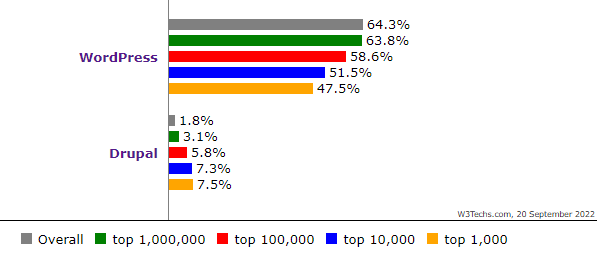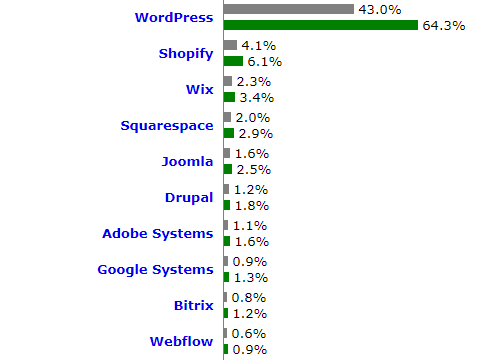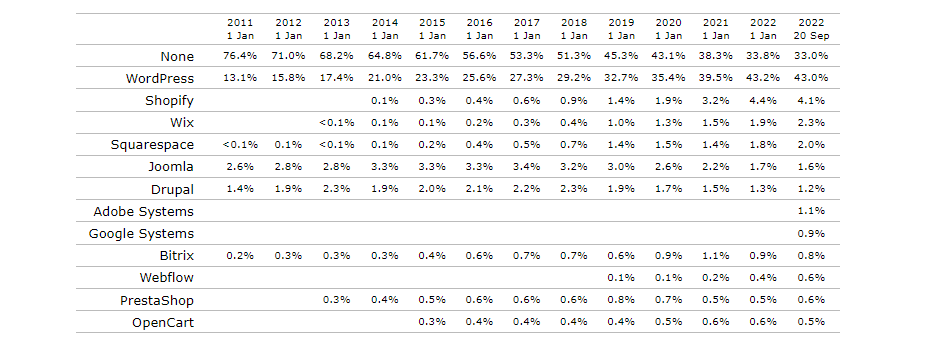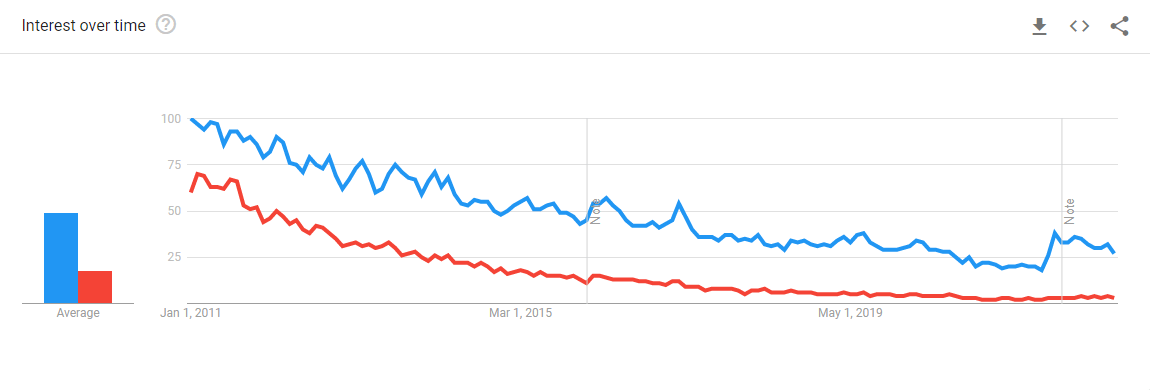In the last of our CMS market share statistics blogs, we look at WordPress vs Drupal.

When it comes to picking the perfect content management system for your website, it’s important that you’re armed with the facts and knowledge to help you make the right choice. That’s why we’ve covered each of the biggest CMS and website builders, comparing them with WordPress.
WordPress 99+ Plugins Mega Bundle April 2025: For a limited time only, you can get the 99+ Plugins Mega Bundle for 60% off! Don’t miss out!
The bundle contains an ultimate selection of plugins that improves WordPress security, administration, SEO and adds additional functionality such as mapping, directories, paywal, access control, download management, eLearning and more .
WordPress vs Drupal is the last in our series looking at market share statistics. So – without further ado – let’s take a look.
WordPress vs Drupal: An Introduction

Before taking a look at the latest CMS market share stats, let’s first introduce the two platforms to be discussed in this blog.
WordPress
As we’re sure you know by now, WordPress is one of the internet’s oldest content management systems.
The platform is used to host a variety of sites. From blogs run by aspiring writers to the website’s of global businesses and eCommerce stores, there are hundreds of thousands of stores hosted on the platform.
WordPress has managed to stay at the fore front of online content management. It’s been around since 2003, and it’s not likely to go anywhere anytime soon.
Drupal
Drupal has a lot in common with WordPress.
Like its rival, Drupal is an open source content management software. It enables users of all technical abilities – from expert to novice – build their own website.
It’s scalable, versatile, with a ton of options for customization.
So, with so much in common, who comes out top in the battle of WordPress vs Drupal?

WordPress vs Drupal: Market Share Statistics 2025
To understand the debate, it’s important to look at CMS statistics generally.
W3Techs is the leading source for CMS usage data. Thanks to them, we can see which of our two platforms is doing best in terms of usage and market share.
From this bar chart, we can see how the top CMS are performing.
WordPress storms ahead of the competition. The platform is used on 43.0% of all websites using a known content management system, giving it a 64.3% CMS market share.
Shopify is the second most widely used CMS, with a 6.1% market share.
Drupal, meanwhile, currently sits in the 6th position. It’s used on 1.2% of all sites with a known content management system, equaling a 1.8% market share.
This chart alone demonstrates the sheer power of WordPress in the CMS market. But it becomes even more evident when we drill down into the top million, top 100,000, top 10,000 and top 1,000 sites.
CMS Usage on the Top Sites WorldWide

Drupal takes an impressive share of the top sites worldwide.
It’s used on 3.1% of the top million, and 7.5% of the top 1,000. These market share statistics are certainly not to be sniffed at.
However, these figures still pale in comparison to WordPress. As of 2025, WordPress is used on 63.8% of the top million sites worldwide. In the top 1,000, it powers 47.5% – that’s very nearly half of all the sites in the top 1,000.
Drupal, and the rest of the CMS competition, has some way to go if they want to match WordPress’ market share.
WordPress vs Drupal: Historical Growth
While WordPress sees the current biggest market share, how do the two platforms compare in terms of growth?
W3Techs very handily provides us with historical data to track CMS growth trends over time.
While WordPress has seen continuous steady growth since 2011, the figures reveal that Drupal’s popularity is in decline.
Usage is down from 1.5% in 2021, and 1.7% in 2020. In fact, Drupal hit it’s usage peak in 2018, when it had a 2.3% market share. Since then, the platform has seen a steady decline.
This decline is also demonstrated when we look at Google Trends for the same period.
This graph shows search interest for the term ‘Drupal’ from 2011 to 2022, indicated in red. Although there have been slight uplifts in interest over the year, interest has been generally declining since 2011.
Meanwhile, WordPress continues to go from strength to strength. Its market share increases incrementally each year. In addition, its search interest eclipses Drupal quite spectacularly.
What Makes WordPress the Cream of the Crop?
You might be wondering what it is about WordPress that makes it stand out from its competitors.
Here are the key reasons the platform has remained so popular over the years:
- Flexibility
- Cost – WordPress can often be a much more cost effective solution compared to other CMS, including Drupal.
- Customization – Along with its versatility and flexibility, WordPress offers plenty of ways to customize it. You can truly make any website you want on the platform.
All of this and more is why WordPress has become the internet’s most popular CMS.
From blogs to eCommerce stores, it offers something for every user.
Custom WordPress Projects

If you want to make the most of WordPress’ customization features, we offer custom hourly support for any WordPress customization and development projects.
From small tweaks to bespoke plugins, we can help you make a solution that works for you and your website.
– As mentioned earlier, WordPress can be used to create any kind of website. It’s flexibility is just one of the reasons it is so beloved.






